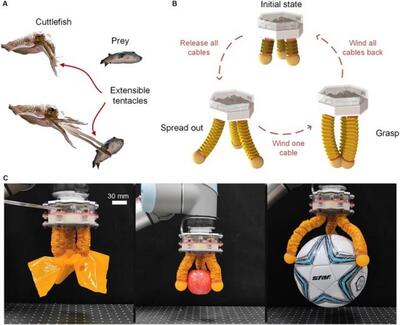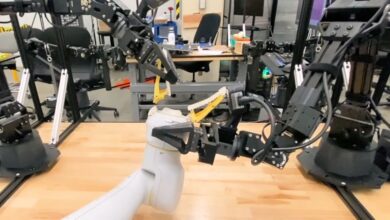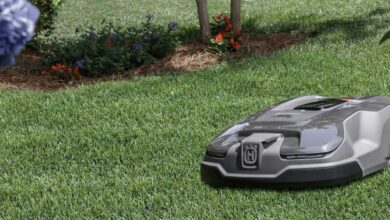The future of robotics inspired by nature

Could the future of manufacturing with robotic equipment draw inspiration from natural organisms to emulate natural movements?
Researchers from Shanghai Jiao Tong University have shared a novel hybrid-driven origami gripper, designed to tackle the challenge of grasping and manipulating objects with versatility and precision. This device, highlighted in a recent study published in Cyborg Bionic Systems, promises to reshape the capabilities of robotic systems in industries ranging from manufacturing to health care.
The device
The gripper uses a combination of pneumatic and cable-driven mechanisms to control an origami-inspired structure, allowing for adjustable finger stiffness and variable finger lengths. The design enables the gripper to handle a wide variety of objects by altering its physical characteristics to suit the task at hand.
Traditional robotic grippers, often limited by their rigid construction and lack of adaptability, can struggle with tasks that require delicate handling or complex manoeuvres. The origami gripper, in contrast, draws inspiration from the biological compliance and softness seen in natural organisms. Its fingers, crafted from thermoplastic urethanes-coated fabric and discrete thin metal sheets, combine the flexibility of soft materials with the precision and strength of rigid components. This allows the gripper to conform closely to the surfaces it interacts with, enhancing its ability to securely grasp diverse materials without causing damage.
One of the key innovations of the origami gripper is its ability to adjust the length and stiffness of its fingers dynamically. By modifying the lengths of the cables and the input pressure of the pneumatic system, the gripper can change its grasp to accommodate objects of different sizes and weights. This feature is particularly useful in scenarios where a variety of objects need to be handled sequentially or in environments where space and adaptability are crucial.
The design of the gripper includes three independently controlled cables for each finger, which can either pull synchronously for uniform motion or differentially for complex, multi-directional movement. This level of control is essential for tasks that require fine manipulation capabilities, such as assembling delicate components or navigating through cluttered or uneven surfaces.
Testing and futurecasting
The research team has conducted extensive testing to demonstrate the gripper’s functionality. Experiments showed that the gripper could effectively adjust its gripping force and finger configuration to handle objects ranging from thin fabric pieces to large, heavy footballs. This versatility is underpinned by the gripper’s pneumatic-cable hybrid system, which provides both the power needed to handle heavier loads and the gentle touch required for more fragile items.
Looking ahead, the researchers plan to further refine the gripper’s design to enhance its load-bearing capabilities and increase its energy efficiency. Such improvements could broaden the gripper’s applications, making it a suitable tool for industries where manual dexterity and delicate handling are paramount.
To read more about the research, click here.




